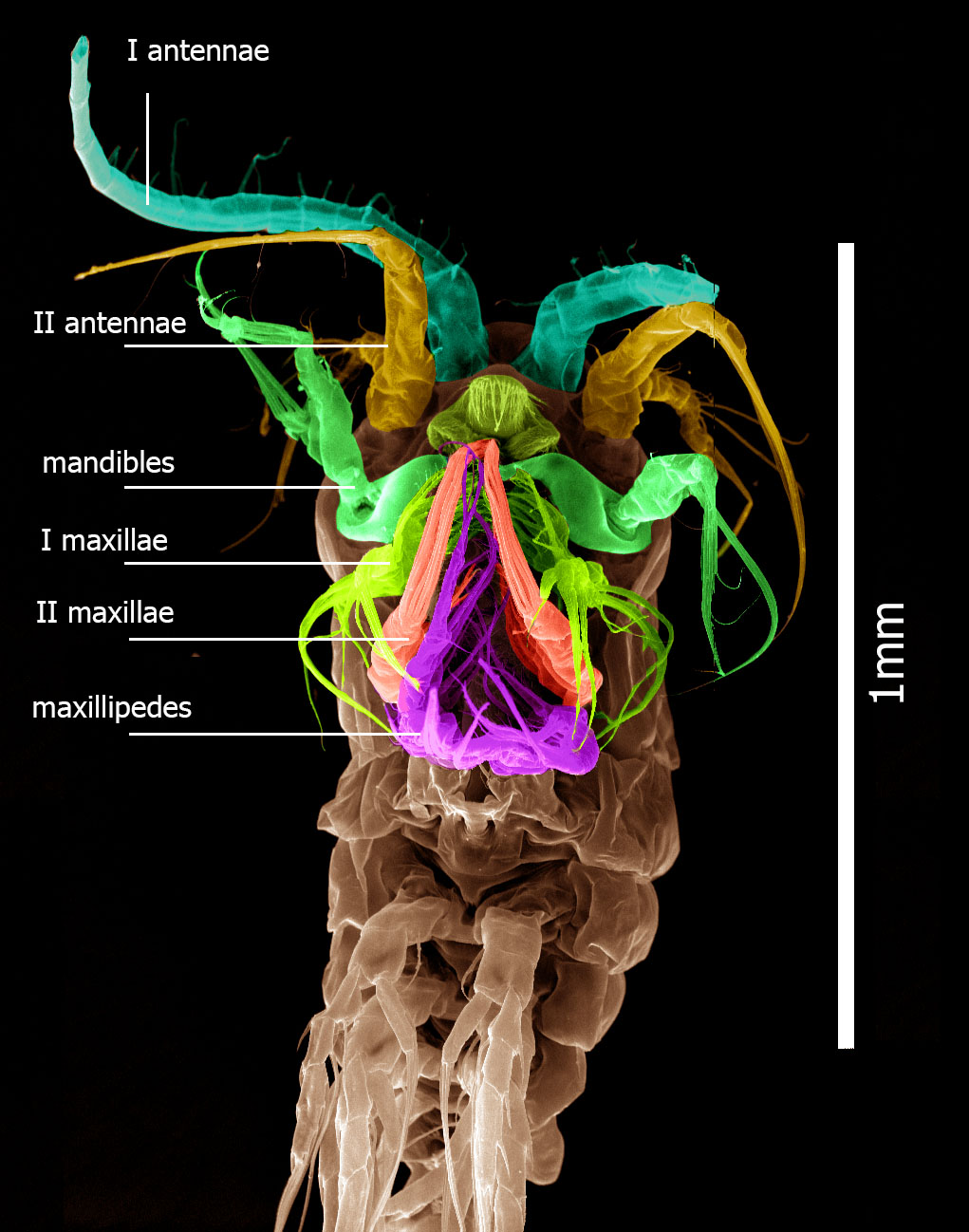|
Epischurella Baikalensis
''Epischurella baikalensis'' (previously ''Epischura baikalensis'') is a species of copepod in family Temoridae. It is Endemism, endemic to Lake Baikal, being the dominant zooplankton species there: 80%–90% of total Biomass (ecology), biomass. It measures . ''Epischurella baikalensis'' inhabits the entire water column, and produces two generations per year: the winter–spring and the summer. These copepods develop under different ecological conditions and vary in the duration of life stages, reproduction time, maturation of sex products and adult males and females lifespan. The total life period of the animals from each generation is one year. One female can produce 10 egg sacs every 10–20 days during its lifetime. The ratio of males and females is 1:1. One of the most essential features of the ecology of ''E. baikalensis'' is the alteration of its mass inhabited areas during a year, as well as in day time. This is due to the need for various conditions for gonad maturation, ... [...More Info...] [...Related Items...] OR: [Wikipedia] [Google] [Baidu] |
Georg Ossian Sars
Prof Georg Ossian Sars HFRSE (20 April 1837 – 9 April 1927) was a Norway, Norwegian marine biology, marine and freshwater biology, freshwater biologist. Life Georg Ossian Sars was born on 20 April 1837 in Kinn (former municipality), Kinn, Norway (now part of Flora, Norway, Flora), the son of Pastor Michael Sars and Maren Sars; the historian Ernst Sars was his elder brother, and the singer and women's skiing pioneer Eva Nansen was his younger sister.Google Translate He grew up in Manger, Norway, Manger, Hordaland, where his father was the local priest. He studied from 1852 to 1854 at Bergen Cathedral School, from 1854 at Oslo Cathedral School, Christiania Cathedral School, and joined the university at Christiana (now the University of Oslo) in 1857. He indulged his interest in natural history while studying medicine; having collected water fleas in local lakes with Wilhelm Lilljeborg's works, he discovered new species, and this resulted in his first scientific publication. Geor ... [...More Info...] [...Related Items...] OR: [Wikipedia] [Google] [Baidu] |
Yale University
Yale University is a Private university, private Ivy League research university in New Haven, Connecticut, United States. Founded in 1701, Yale is the List of Colonial Colleges, third-oldest institution of higher education in the United States, and one of the nine colonial colleges chartered before the American Revolution. Yale was established as the Collegiate School in 1701 by Congregationalism in the United States, Congregationalist clergy of the Connecticut Colony. Originally restricted to instructing ministers in theology and sacred languages, the school's curriculum expanded, incorporating humanities and sciences by the time of the American Revolution. In the 19th century, the college expanded into graduate and professional instruction, awarding the first Doctor of Philosophy, PhD in the United States in 1861 and organizing as a university in 1887. Yale's faculty and student populations grew rapidly after 1890 due to the expansion of the physical campus and its scientif ... [...More Info...] [...Related Items...] OR: [Wikipedia] [Google] [Baidu] |
Fauna Of Lake Baikal
Fauna (: faunae or faunas) is all of the animal life present in a particular region or time. The corresponding terms for plants and fungi are ''flora'' and ''funga'', respectively. Flora, fauna, funga and other forms of life are collectively referred to as '' biota''. Zoologists and paleontologists use ''fauna'' to refer to a typical collection of animals found in a specific time or place, e.g. the "Sonoran Desert fauna" or the "Burgess Shale fauna". Paleontologists sometimes refer to a sequence of faunal stages, which is a series of rocks all containing similar fossils. The study of animals of a particular region is called faunistics. Etymology ''Fauna'' comes from the name Fauna, a Roman goddess of earth and fertility, the Roman god Faunus, and the related forest spirits called Fauns. All three words are cognates of the name of the Greek god Pan, and ''panis'' is the Modern Greek equivalent of fauna (πανίς or rather πανίδα). ''Fauna'' is also the word for a book ... [...More Info...] [...Related Items...] OR: [Wikipedia] [Google] [Baidu] |
Crustaceans Described In 1900
Crustaceans (from Latin meaning: "those with shells" or "crusted ones") are invertebrate animals that constitute one group of arthropods that are traditionally a part of the subphylum Crustacea (), a large, diverse group of mainly aquatic arthropods including decapods (shrimps, prawns, crabs, lobsters and crayfish), seed shrimp, branchiopods, fish lice, krill, remipedes, isopods, barnacles, copepods, opossum shrimps, amphipods and mantis shrimp. The crustacean group can be treated as a subphylum under the clade Mandibulata. It is now well accepted that the hexapods (insects and entognathans) emerged deep in the Crustacean group, with the completed pan-group referred to as Pancrustacea. The three classes Cephalocarida, Branchiopoda and Remipedia are more closely related to the hexapods than they are to any of the other crustaceans ( oligostracans and multicrustaceans). The 67,000 described species range in size from ''Stygotantulus stocki'' at , to the Japanese spider crab with a ... [...More Info...] [...Related Items...] OR: [Wikipedia] [Google] [Baidu] |
Freshwater Crustaceans Of Asia
Fresh water or freshwater is any naturally occurring liquid or frozen water containing low concentrations of dissolved salts and other total dissolved solids. The term excludes seawater and brackish water, but it does include non-salty mineral-rich waters, such as chalybeate springs. Fresh water may encompass frozen and meltwater in ice sheets, ice caps, glaciers, snowfields and icebergs, natural precipitations such as rainfall, snowfall, hail/ sleet and graupel, and surface runoffs that form inland bodies of water such as wetlands, ponds, lakes, rivers, streams, as well as groundwater contained in aquifers, subterranean rivers and lakes. Water is critical to the survival of all living organisms. Many organisms can thrive on salt water, but the great majority of vascular plants and most insects, amphibians, reptiles, mammals and birds need fresh water to survive. Fresh water is the water resource that is of the most and immediate use to humans. Fresh water is not always pot ... [...More Info...] [...Related Items...] OR: [Wikipedia] [Google] [Baidu] |
World Register Of Marine Species
The World Register of Marine Species (WoRMS) is a taxonomic database that aims to provide an authoritative and comprehensive catalogue and list of names of marine organisms. Content The content of the registry is edited and maintained by scientific specialists on each group of organism. These taxonomists control the quality of the information, which is gathered from the primary scientific literature as well as from some external regional and taxon-specific databases. WoRMS maintains valid names of all marine organisms, but also provides information on synonyms and invalid names. It is an ongoing task to maintain the registry, since new species are constantly being discovered and described by scientists; in addition, the nomenclature and taxonomy of existing species is often corrected or changed as new research is constantly being published. Subsets of WoRMS content are made available, and can have separate badging and their own home/launch pages, as "subregisters", such as th ... [...More Info...] [...Related Items...] OR: [Wikipedia] [Google] [Baidu] |
IUCN Red List
The International Union for Conservation of Nature (IUCN) Red List of Threatened Species, also known as the IUCN Red List or Red Data Book, founded in 1964, is an inventory of the global conservation status and extinction risk of biological species. A series of Regional Red Lists, which assess the risk of extinction to species within a political management unit, are also produced by countries and organizations. The goals of the Red List are to provide scientifically based information on the status of species and subspecies at a global level, to draw attention to the magnitude and importance of threatened biodiversity, to influence national and international policy and decision-making, and to provide information to guide actions to conserve biological diversity. Major species assessors include BirdLife International, the Institute of Zoology (the research division of the Zoological Society of London), the World Conservation Monitoring Centre, and many Specialist Groups w ... [...More Info...] [...Related Items...] OR: [Wikipedia] [Google] [Baidu] |
Water Column
The (oceanic) water column is a concept used in oceanography to describe the physical (temperature, salinity, light penetration) and chemical ( pH, dissolved oxygen, nutrient salts) characteristics of seawater at different depths for a defined geographical point. Generally, vertical profiles are made of temperature, salinity, chemical parameters at a defined point along the water column. The water column is the largest, yet one of the most under-explored, habitats on the planet; it is explored to better understand the ocean as a whole, including the huge biomass that lives there and its importance to the global carbon and other biogeochemical cycles. Studying the water column also provides understanding on the links between living organisms and environmental parameters, large-scale water circulation and the transfer of matter between water masses. Water columns are used chiefly for environmental studies evaluating the stratification or mixing of thermal or chemically stratif ... [...More Info...] [...Related Items...] OR: [Wikipedia] [Google] [Baidu] |
Epischura Baikalensis Scanning Electron Microscope Photography
''Epischura'' is a genus of copepods in the family Temoridae. Species The following species are recognised in the genus ''Epischura'': *'' Epischura fluviatilis'' Herrick, 1883 *''Epischura lacustris'' S. A. Forbes, 1882 *'' Epischura massachusettsensis'' Pearse, 1906 *'' Epischura nevadensis'' Lilljeborg, 1889 *'' Epischura nordenskioldi'' Lilljeborg, 1889 *'' Epischura smirnovi'' Borutsky, 1961 *'' Epischura udylensis'' Borutsky, 1947 *''Epischura vagans'' Pickering, 1844 *'' Epischura baikalensis'' G. O. Sars, 1900 *'' Epischura chankensis'' Rylov, 1928 It has recently been proposed that ''Epischura'' is parapheletic with respect to ''Heterocope ''Heterocope'' is a genus of copepods in the family Temoridae. It was described by Norwegian biologist Georg Ossian Sars in 1863. Species The World Register of Marine Species lists the following currently accepted species: * '' Heterocope bor ...'' and that the Siberian species, ''Epischura baikalensis'' and ''Epischurella cha ... [...More Info...] [...Related Items...] OR: [Wikipedia] [Google] [Baidu] |
Kemerovo
Kemerovo ( rus, Ке́мерово, p=ˈkʲemʲɪrəvə) is an industrial types of inhabited localities in Russia, city and the administrative center of Kemerovo Oblast, Russia, located at the confluence of the Iskitimka River, Iskitimka and Tom Rivers, in the major coal mining region of the Kuznetsk Basin. Population: The city was known as ''Shcheglovsk'' until March 27, 1932. History Kemerovo is an amalgamation of, and successor to, several older Russian settlements. A waypoint named Verkhotomsky ''ostrog'' was established nearby in 1657 on a road from Tomsk to Kuznetsk fortress. In 1701, the settlement of Shcheglovsk was founded on the left bank of the Tom; soon it became a village. By 1859, seven villages existed where modern Kemerovo is now: Shcheglovka (or Ust-Iskitimskoye), Kemerovo (named in 1734), Yevseyevo, Krasny Yar, Kur-Iskitim (Pleshki), Davydovo (Ishanovo), and Borovaya. In 1721, coal was discovered in the area. The first coal mines were established in 1907, later ... [...More Info...] [...Related Items...] OR: [Wikipedia] [Google] [Baidu] |
Biomass (ecology)
Biomass is the mass of living biological organisms in a given area or ecosystem at a given time. Biomass can refer to ''species biomass'', which is the mass of one or more species, or to ''community biomass'', which is the mass of all species in the community. It can include microorganisms, plants or animals. The mass can be expressed as the average mass per unit area, or as the total mass in the community. How biomass is measured depends on why it is being measured. Sometimes, the biomass is regarded as the natural mass of organisms ''in situ'', just as they are. For example, in a salmon fishery, the salmon biomass might be regarded as the total wet weight the salmon would have if they were taken out of the water. In other contexts, biomass can be measured in terms of the dried organic mass, so perhaps only 30% of the actual weight might count, the rest being water. For other purposes, only biological tissues count, and teeth, bones and shells are excluded. In some application ... [...More Info...] [...Related Items...] OR: [Wikipedia] [Google] [Baidu] |





